The Real Way to Wash a Weighted Blanket (Without Wrecking It)
After years of working with textiles, I’ve seen just about everything. But weighted blankets? They’re in a league of their own. They started popping up with clients who needed them for sensory support, and now, they’re everywhere—helping people sleep better and dial down stress. It didn’t take long to learn these aren’t just heavy comforters; they’re therapeutic tools. And like any important tool, you’ve got to take care of it properly.
In this article
Cleaning a weighted blanket is nothing like tossing a regular comforter in the wash. The sheer weight and the stuff inside create some unique hurdles. I’ve seen people accidentally destroy expensive blankets and, even worse, their washing machines. The good news? You absolutely can clean them safely at home. It just takes a little know-how and patience.
So, let’s walk through the methods the pros use. This is about more than just getting it clean—it’s about protecting your investment and making sure your blanket keeps doing its calming, comforting job.
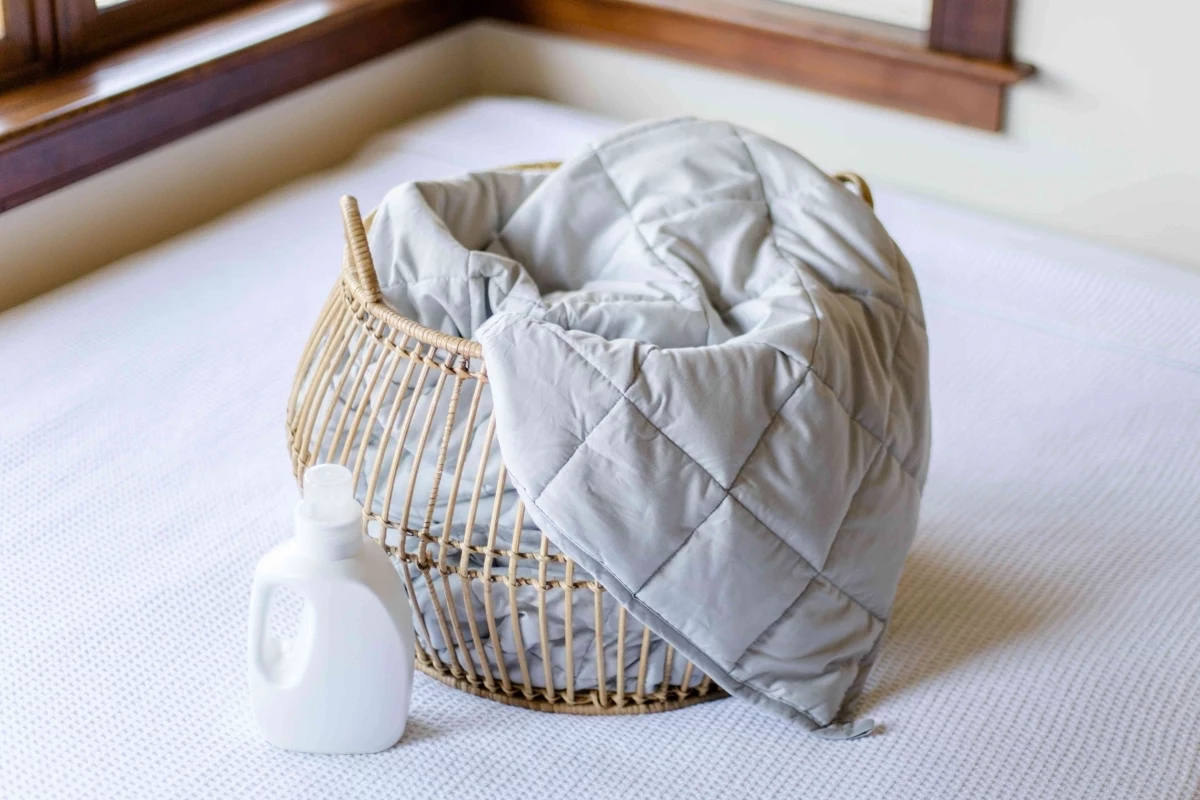
First, Why Are These Blankets So Tricky?
To get this right, you need to understand what you’re dealing with. A weighted blanket isn’t one solid thing; it’s an engineered system with an outer fabric, an inner shell, and, most importantly, the weighted filler. Each part changes the cleaning game.
The Physics of a Heavy, Wet Blanket
Your home washing machine is designed to handle a certain load capacity. When you wash clothes, they tumble and spread out. A weighted blanket, on the other hand, is a single, dense mass. A 15-pound blanket can easily top 25 pounds once it’s soaked with water. That creates a TON of force. In a top-loader with an agitator (that big spindle in the middle), it can wrap itself around it and strain the motor. In a front-loader, it can slam against the drum over and over, potentially throwing the machine off balance and damaging the bearings. Heads up: I once had a client face a washer repair bill that was three times what they paid for their 25-pound blanket. Ouch.

The Filler Is What Really Matters
The tiny things that give the blanket its heft are the most important factor in how you clean it. Quality blankets generally use one of two fillers, and there’s one type you should definitely avoid.
- Micro Glass Beads: This is the good stuff. The beads are super tiny, like sand, making them dense, quiet, and hypoallergenic. A huge plus is that they don’t absorb water, which makes washing and drying much easier. The only real risk here is a seam bursting. A tiny hole can unleash a flood of beads into your machine, which can wreck the pump and drain.
- Plastic Poly-Pellets: These are also common and effective. They’re small, non-toxic plastic beads, a little bigger than the glass ones, so they can be a bit more rustly. The biggest thing to watch out for with plastic pellets is heat. High temperatures from a washer or dryer can warp or melt them, completely ruining the blanket’s texture.
- Sand, Grains, or Pebbles: If your blanket is filled with organic stuff like sand, rice, or beans, do NOT submerge it in water. I can’t say this enough. These materials will soak up water, clump together, and become a perfect home for mold and mildew. They will simply never dry properly. Honestly, blankets with this kind of fill should be spot-cleaned only, and to be frank, I’d avoid buying them in the first place.
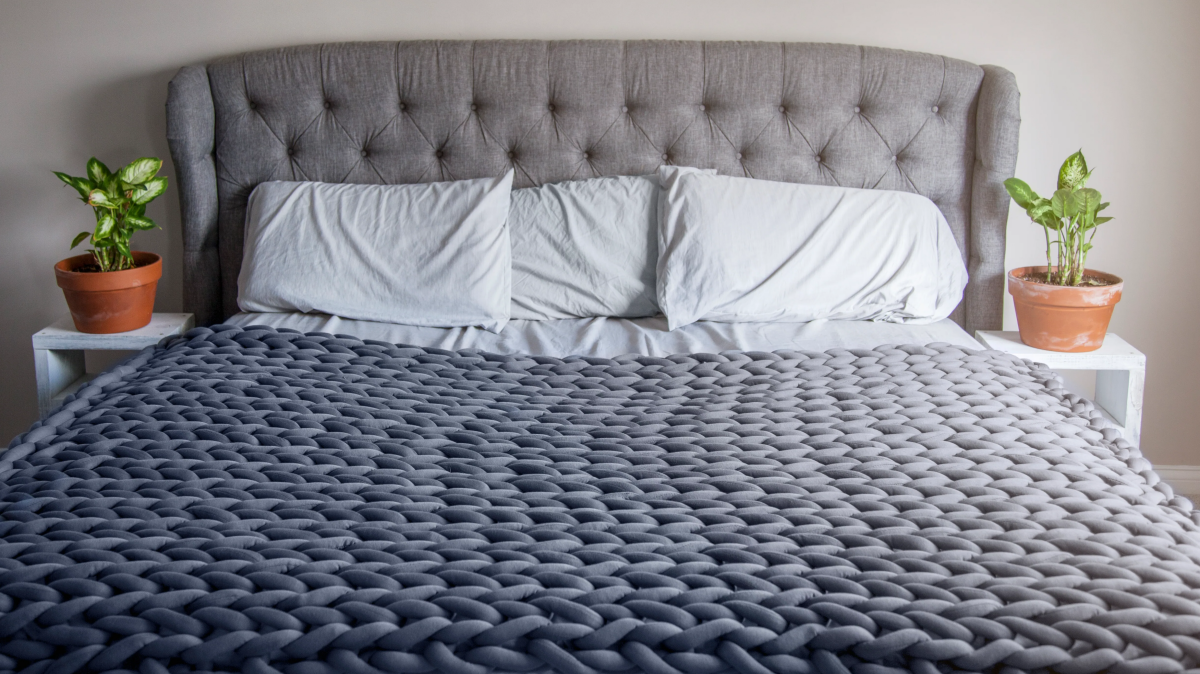
Don’t Forget the Fabric Shell
The material on the outside matters, too. Most are made from durable, comfy fabrics like Cotton (strong but gets very heavy when wet), Minky (super soft polyester that hates high heat and fabric softener), or Bamboo/Tencel (cool, smooth, but more delicate).
The Pre-Wash Check: What to Do Before You Start
Before a weighted blanket gets anywhere near water, it needs a careful inspection. Rushing this step is how accidents happen. Take five minutes and do this at home.
1. Read the Care Label: This is always your first stop. The manufacturer knows best. But sometimes, they’ll say “spot-clean only” just to cover themselves, even if the blanket can handle a gentle wash. Use the label as a guide, but also use your own judgment based on the materials.
2. Inspect Every Seam: This is the most critical step. Lay the blanket flat and run your fingers along every single stitch line, pressing gently. You’re hunting for loose threads or weak spots. A single tiny hole can rip wide open in the machine. If you find a weak seam, you have to fix it before washing. A few passes with a needle and some strong upholstery thread using a backstitch will do the trick. By the way, if sewing isn’t your thing, a strong iron-on mending patch designed for denim or canvas can work in a pinch. Just make sure the edges are sealed down tight!
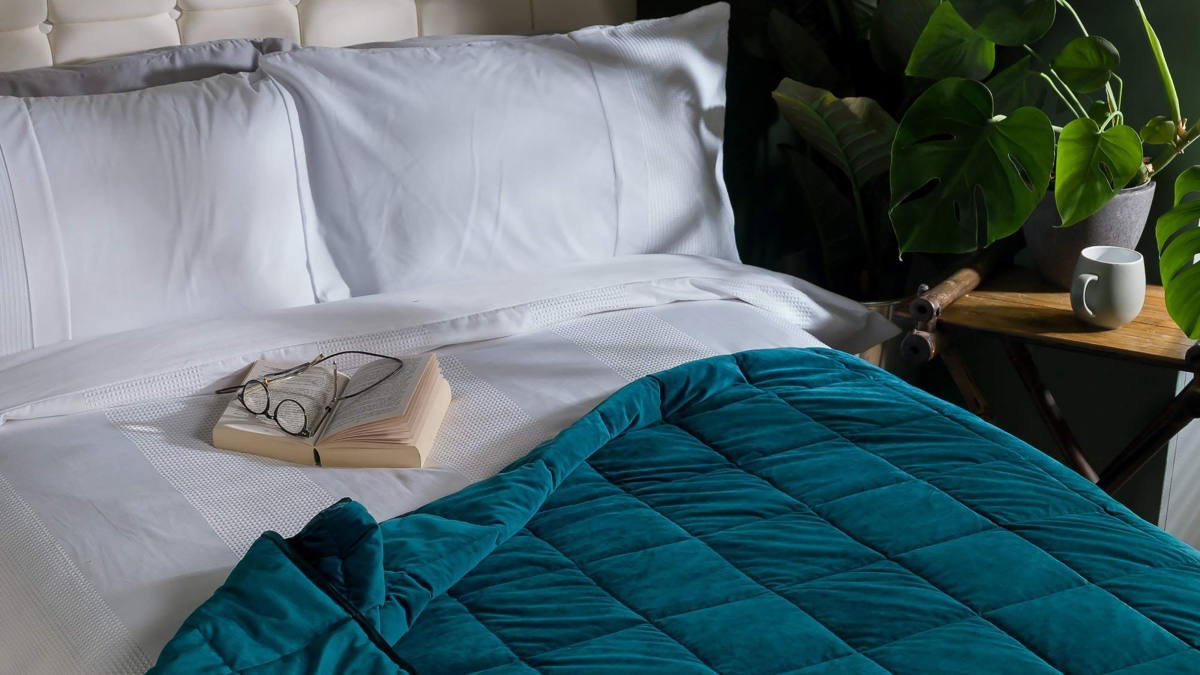
3. Weigh the Blanket & Know Your Machine: A standard home washer can usually handle about 15-20 pounds. My professional rule is to never wash a blanket that weighs more than half of your machine’s max capacity. So for a 20-pound capacity machine, don’t wash anything over 10 pounds. For a 15-pound blanket, you really need a large-capacity machine. Anything 20 pounds or more? Take it to a laundromat. Their industrial machines are built for this.
4. Spot-Clean First: If it’s just a small stain, spot-cleaning is way better than a full wash. To do it right, mix about half a teaspoon of a clear, mild detergent into a cup of cool water. That’s all you need. Dip a clean white cloth in the mix and gently blot the stain, working from the outside in to stop it from spreading. Never scrub! After, use a different cloth with plain water to blot out the soap. Let it air dry.

The Washing Process: Step-by-Step to Success
Okay, so you’ve done your checks and you’re good to go. Follow these steps exactly to minimize risk.
- Machine Choice: A front-loader is always the best option because it doesn’t have an agitator to twist and tear the blanket. If you only have a top-loader, hopefully it’s a high-efficiency model without one.
- Detergent: Use a mild, liquid detergent—powders can leave a chalky residue. Skip bleach entirely, and definitely no fabric softener, as it can ruin the texture of minky fabric and reduce the breathability of cotton.
- Loading: Wash the blanket all by itself. Drape it loosely and evenly around the drum to help the machine stay balanced. If it’s a lighter blanket (under 10 lbs) in a big machine, you can add a couple of towels to help with balance, but otherwise, let it fly solo.
- Settings: Use the gentlest cycle available, like “Delicates” or “Hand Wash.” ALWAYS use cold water. Set the spin speed to “Low” or even “No Spin.” A fast spin is the most dangerous part of the cycle. An extra rinse is also a great idea to make sure all the soap is gone.

Drying: The Place Where Most People Go Wrong
I’ve seen more blankets ruined during the drying phase than in the wash. The number one rule is non-negotiable: NEVER put a weighted blanket in a machine dryer. The heat can melt plastic fillers, and the tumbling is way too rough on the seams.
Air-drying is the only way, and it takes time. You have to be patient, because a damp blanket is a moldy blanket.
- Get Excess Water Out: After the wash, gently squeeze the blanket against the side of the drum. Don’t wring it! You can also lay it on a big, clean towel, roll them up together, and press down to absorb more water.
- Lay It Flat to Dry: The best spot is flat, clean, and has good airflow. Never hang a wet weighted blanket from a clothesline—all that weight pulling on one spot is a recipe for torn seams. Instead, lay it flat across a few sturdy drying racks or drape it over several stable chairs.
- Flip and Fluff: Here’s a key tip. Every few hours, flip the blanket over. Give it a gentle shake to redistribute the filling and prevent clumping. This helps air get to every part of it.
- Be Patient: It can take a full 24 to 72 hours to dry completely. Feel deep inside the fabric to check; the surface can be deceiving. It must be bone dry before you use it again.
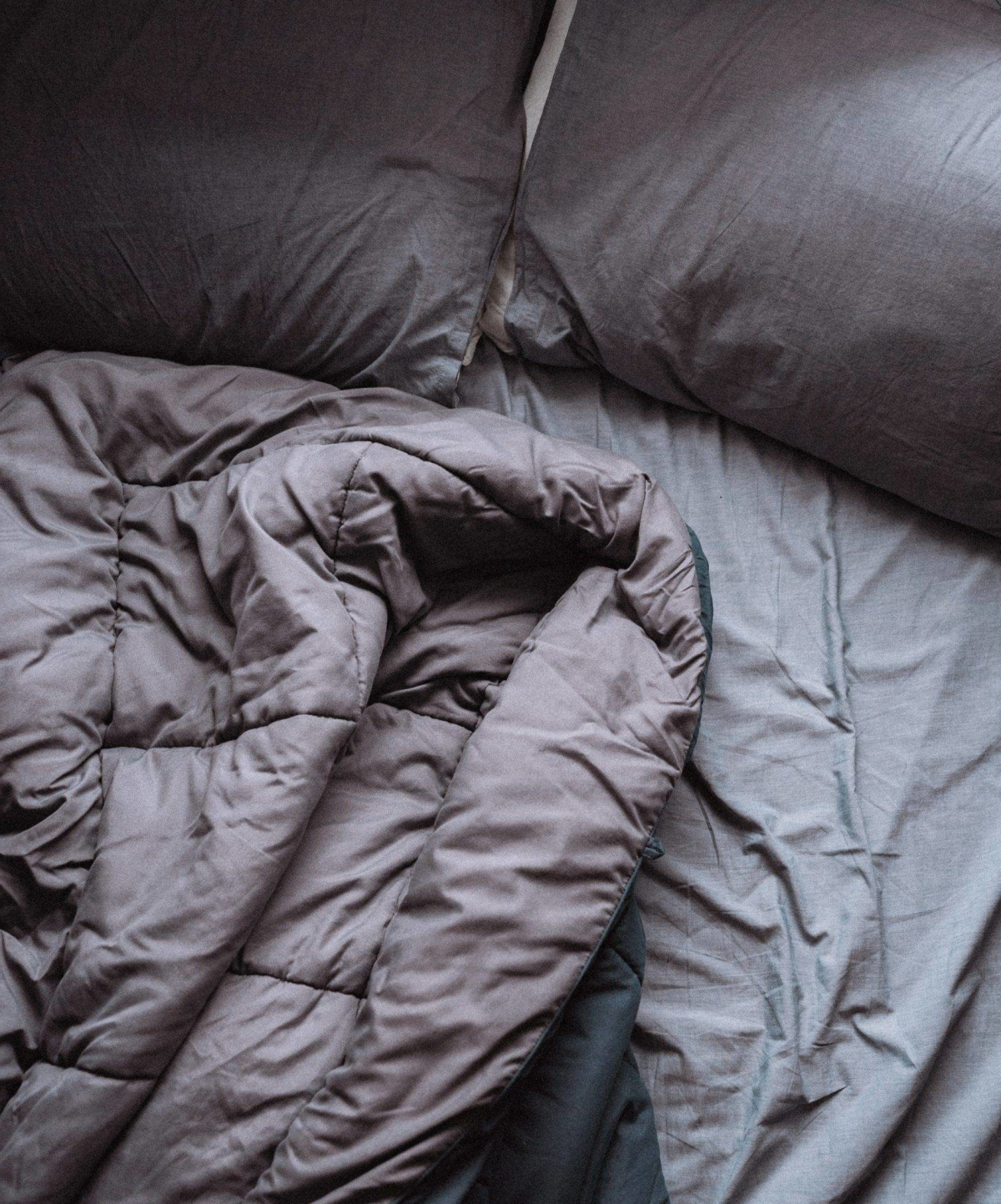
A Quick Fix for Common Disasters
Sometimes, things go wrong. Don’t panic! Here’s what to do.
Problem: My blanket smells musty!
Ah, the smell of mildew. It means it didn’t dry completely. You’ll need to rewash it. This time, add one cup of white vinegar directly into the wash drum along with your mild detergent. The vinegar is amazing at killing mildew spores and neutralizing odors. Then, be extra diligent about the drying process.
Problem: The beads spilled in my washer!
Okay, deep breath. First, do NOT run the machine again. Unplug it. Use a shop vac or the hose attachment on your regular vacuum to carefully suck all the visible beads out of the drum. Next, locate your washing machine’s drain pump filter (usually a little door on the bottom front of the machine). Put a towel down, open it up, and clean it out. It probably caught most of the beads and saved you a pricey repair call.
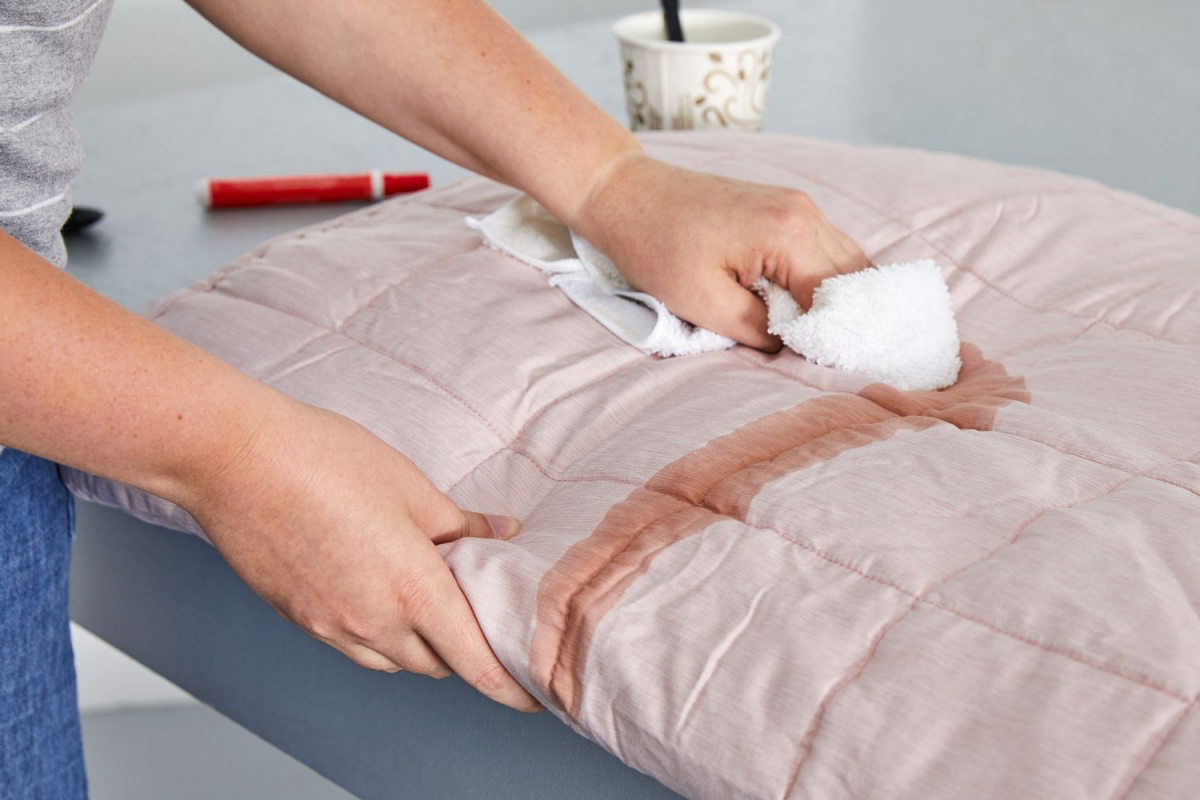
The Best Long-Term Solution (And How to Save Money)
Honestly, the smartest thing you can do is get a duvet cover made specifically for your weighted blanket. These covers have internal ties to keep the blanket from shifting around. You just strip off the cover and wash it weekly with your other sheets. This means you might only have to deep-clean the inner blanket once or twice a year.
Think about the costs. A trip to the laundromat to use their giant commercial washer might run you $8-$15. Professional cleaning could be anywhere from $40 to $80 depending on the weight. Suddenly, that $35 duvet cover seems like a bargain, right?
A weighted blanket is a serious investment in your well-being. A little bit of effort to maintain it properly will pay off every single night you settle in under its calming weight. Treat it right, and it’ll take care of you for years to come.
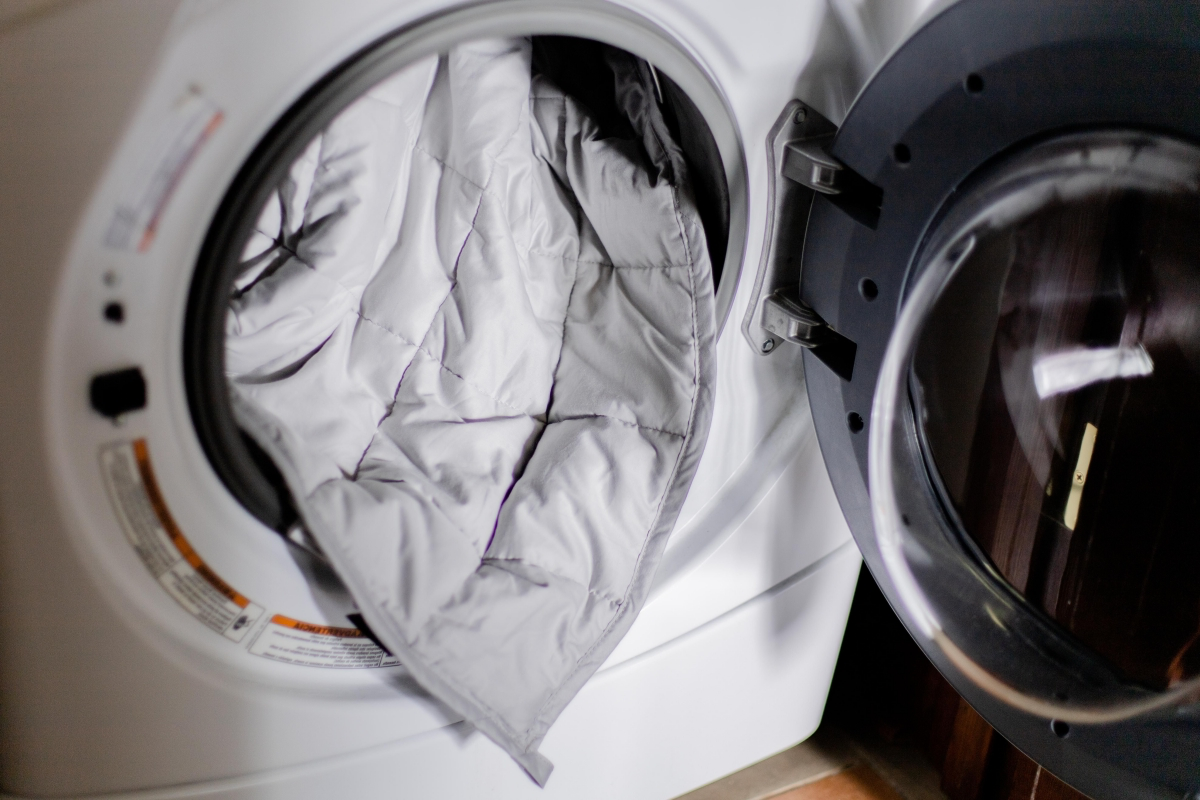
Galerie d’inspiration


The single best way to protect your weighted blanket and simplify your life? A removable duvet cover. Think of it as the blanket’s first line of defense.
- It absorbs most of the daily oils, sweat, and dirt.
- Washing a lightweight cover is infinitely easier and safer for your home machine.
- It allows you to change the look and feel of your blanket seasonally, moving from a cool cotton like that used by Bearaby to a cozy fleece for winter.

According to the Asthma and Allergy Foundation of America, dust mites are a major trigger for allergies and asthma, and they thrive in bedding.
This is why regular cleaning is non-negotiable for a therapeutic tool you snuggle with nightly. While you can’t wash the heavy inner blanket weekly, washing its outer cover frequently eliminates these allergens, ensuring your comfort is both physical and hygienic.
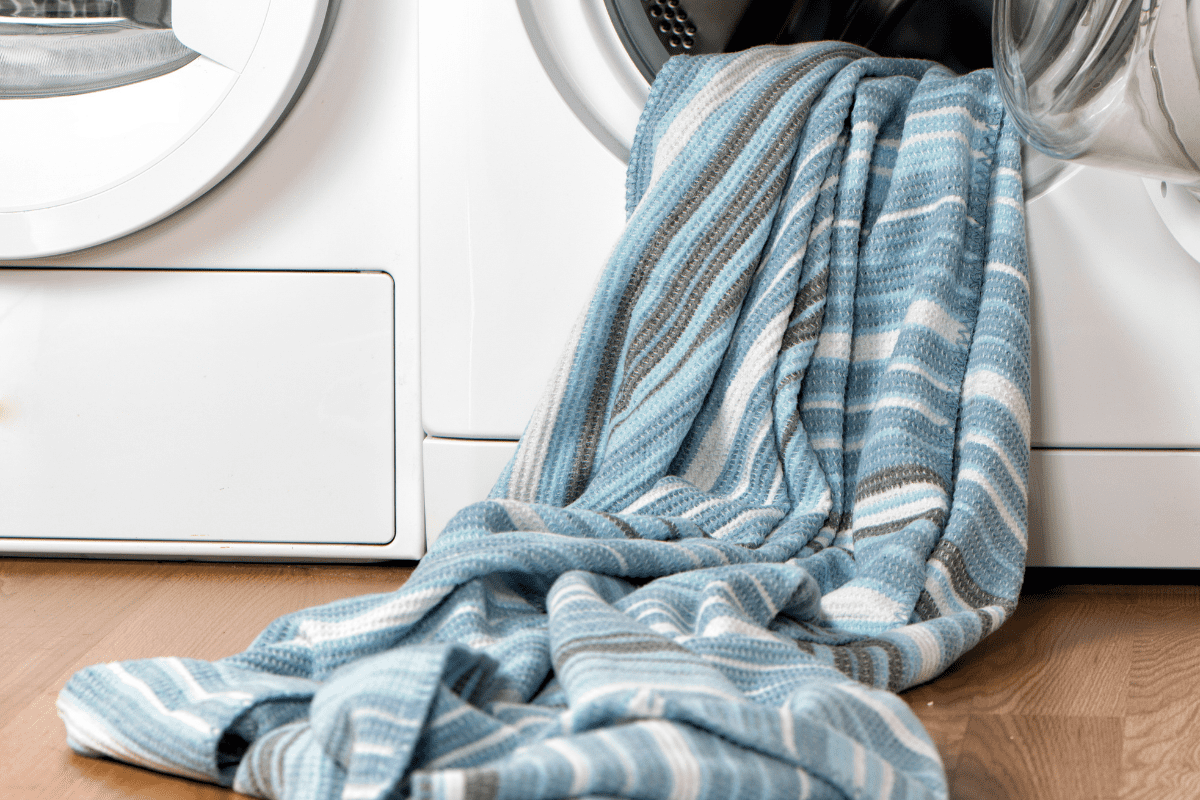
My blanket is clean, but now it’s a 25-pound water log. What’s the best way to dry it?
Patience is key. Never hang a wet weighted blanket—the weight can stretch the fabric and cause the filling to shift and clump permanently. Instead, tumble dry on the lowest possible heat setting, or even on an air-fluff cycle. Toss in a few wool dryer balls to improve airflow and speed things up slightly. Alternatively, lay it flat over a few drying racks or clean, sturdy surfaces, and be sure to flip it every few hours for even drying, which can take a full day or more.

For small spills or stains, spot cleaning is your best friend: Mix a small amount of a gentle, pH-neutral detergent, like The Laundress Signature Detergent or even a drop of clear dish soap, with cool water. Dab the stain gently with a clean white cloth, working from the outside in. Rinse by dabbing with a cloth dampened with plain water. This avoids a full, machine-stressing wash.

Glass Microbeads: These are the premium choice—tiny, sand-like, and dense. They are quiet, distribute weight evenly, and are machine washable and dryable without risk of melting. High-end brands like Gravity or Bearaby almost exclusively use glass.
Plastic Poly-Pellets: A common, more budget-friendly option. They are slightly larger and can be a bit noisier when shifting. The main drawback? They have a lower melting point, so high-heat drying is an absolute no-go as it can damage both the pellets and the blanket fabric.
Always check the care tag, but if you have a choice, glass beads offer greater peace of mind during cleaning.
- Enhances the calming sensory experience.
- Keeps the fabric feeling fresh and soft.
The secret? A subtle scent refresh between washes. A light misting with a natural linen spray can revive your blanket’s atmosphere. Look for formulas with essential oils like lavender or chamomile, known for their relaxing properties. This simple step maintains that ‘clean sheet feeling’ and extends the time between strenuous full washes.










